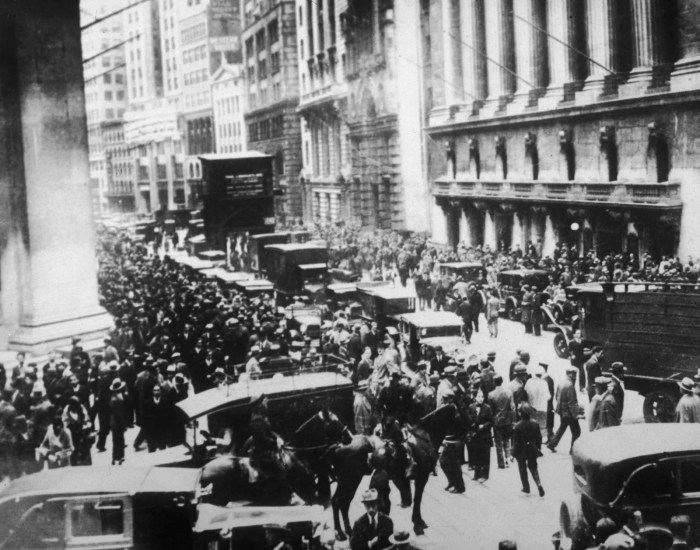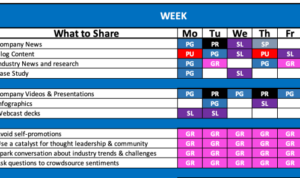Stock market crashes set the stage for this enthralling narrative, offering readers a glimpse into a story that is rich in detail and brimming with originality. From the causes to the historical impacts, this exploration dives deep into the world of market volatility.
As we navigate through the intricate web of factors leading to market crashes, we uncover the fascinating interplay between economic indicators, investor behavior, and the lasting effects on individuals and economies alike.
Causes of Stock Market Crashes
The stock market can experience crashes due to a variety of factors that create panic and lead to a significant drop in prices. Understanding these causes is crucial for investors to navigate the volatile market effectively.
Major Factors Contributing to Stock Market Crashes
- Overvaluation: When stock prices are inflated beyond their intrinsic value, a correction can lead to a crash.
- Speculation and Herd Mentality: Excessive speculation and following the crowd can create bubbles that eventually burst.
- Geopolitical Events: Political instability, wars, or trade disputes can shake investor confidence and trigger a market crash.
Economic Indicators Signaling a Potential Market Crash
-
Yield Curve Inversion
: When short-term interest rates exceed long-term rates, it may indicate an impending recession and market downturn.
-
High Debt Levels
: Excessive debt burdens on corporations or governments can lead to financial crises and market crashes.
-
Unemployment Rates
: Rising unemployment rates suggest a weakening economy, which can precede a market crash.
Role of Investor Behavior in Triggering Crashes
- Emotional Decision-Making: Fear, greed, and panic can drive investors to make irrational decisions that exacerbate market crashes.
- Margin Trading: Using borrowed money to invest in stocks amplifies losses and can accelerate market downturns.
- Lack of Diversification: Concentrating investments in a few assets increases risk exposure and vulnerability to market crashes.
Historical Stock Market Crashes

Stock market crashes have played a significant role throughout history, impacting economies and investors worldwide. Let’s take a look at some examples of major stock market crashes, their causes, effects, and how governments and financial institutions responded.
The Great Depression (1929)
The Great Depression of 1929 is one of the most famous stock market crashes in history. It was triggered by the crash of the U.S. stock market on October 29, 1929, known as Black Tuesday. The crash led to a decade-long economic downturn, with widespread unemployment and poverty.
Dot-Com Bubble Burst (2000)
The Dot-Com Bubble Burst in 2000 was caused by the collapse of overvalued internet companies. The stock market experienced a sharp decline, leading to significant losses for investors. This crash marked the end of the rapid growth of tech stocks in the late 1990s.
Global Financial Crisis (2008)
The Global Financial Crisis of 2008 was triggered by the subprime mortgage crisis in the United States. It resulted in the collapse of major financial institutions, a severe credit crunch, and a worldwide recession. Governments around the world implemented various stimulus packages and bailouts to stabilize the economy.
Comparison and Contrast of Market Crashes
– The Great Depression was characterized by widespread economic hardship, while the Dot-Com Bubble Burst and Global Financial Crisis were more focused on specific sectors.
– Each crash had different triggers, ranging from speculative bubbles to financial imbalances.
– Governments and financial institutions responded differently to each crash, implementing various policies and regulations to prevent future crises.
Government and Financial Institutions Response
During the Great Depression, the U.S. government introduced the New Deal to stimulate the economy and regulate financial markets. Following the Dot-Com Bubble Burst, regulatory measures were put in place to prevent excessive speculation. After the Global Financial Crisis, central banks implemented monetary easing policies to boost liquidity and stabilize financial markets.
Impact of Stock Market Crashes
Stock market crashes have a significant impact on individual investors, the broader economy, and overall financial stability. Understanding these effects is crucial for investors to navigate turbulent market conditions.
Effects on Individual Investors
Stock market crashes can have devastating consequences for individual investors, especially those heavily invested in equities. Here are some key impacts:
- Loss of wealth: As stock prices plummet, investors see the value of their portfolios decline rapidly, leading to significant financial losses.
- Panic selling: Fear and uncertainty in the market often prompt investors to sell their holdings, exacerbating the downward spiral and further driving down prices.
- Retirement concerns: Older investors nearing retirement may face challenges if their retirement savings are heavily tied to the stock market, impacting their financial security.
- Psychological impact: Stock market crashes can cause stress, anxiety, and emotional turmoil for investors, affecting their overall well-being.
Impact on the Broader Economy
Stock market crashes not only affect individual investors but also have far-reaching consequences on the broader economy. Here’s how market crashes influence economic conditions:
- Reduced consumer spending: Wealth erosion and market uncertainty can lead to a decrease in consumer confidence and spending, impacting businesses and overall economic growth.
- Credit tightening: Financial institutions may become more cautious in lending, making it harder for businesses and individuals to access credit, which can further weaken economic activity.
- Job losses: Economic downturns resulting from stock market crashes can lead to layoffs and job losses as companies struggle to navigate challenging market conditions.
- Government intervention: Governments may need to implement stimulus measures or policies to stabilize the economy and restore investor confidence, increasing public debt levels.
Strategies for Mitigating the Impact
While the impact of stock market crashes can be severe, there are strategies that individual investors can consider to mitigate the effects:
- Diversification: Spreading investments across different asset classes can help reduce risk and minimize the impact of a market downturn on a single investment.
- Long-term perspective: Maintaining a long-term investment horizon and avoiding knee-jerk reactions to market volatility can help investors ride out turbulent times.
- Emergency fund: Having an emergency fund with liquid assets can provide a financial cushion during market downturns and prevent the need to sell investments at a loss.
- Professional advice: Consulting with a financial advisor during market turbulence can provide guidance and support to make informed decisions based on individual financial goals.
Recovery from Stock Market Crashes
After a stock market crash, the road to recovery can be a long and challenging journey. However, there are certain steps that can be taken to help the market bounce back and regain stability. Let’s explore the strategies and timeline for recovering from a stock market crash and how investor confidence is restored in the process.
Steps to Recover from a Stock Market Crash
- Government Intervention: Governments can implement fiscal and monetary policies to stabilize the economy and restore investor confidence. This can include lowering interest rates, injecting liquidity into the market, and providing stimulus packages.
- Regulatory Reforms: Strengthening regulations and oversight in the financial sector can help prevent future market crashes and increase transparency for investors.
- Investor Education: Educating investors about market risks and the importance of diversification can help prevent panic selling during turbulent times.
Timeline for Market Recovery Post-Crash
The timeline for market recovery post-crash can vary depending on the severity of the crash and the effectiveness of recovery measures. In some cases, it may take months to years for the market to fully recover and reach pre-crash levels.
Restoring Investor Confidence
- Transparency and Communication: Providing clear and timely information to investors about market conditions and recovery efforts can help restore confidence in the market.
- Stability in Economic Indicators: When economic indicators show signs of improvement, such as GDP growth, decreased unemployment rates, and stable inflation, investors are more likely to regain confidence in the market.
- Positive Market Sentiment: Positive news, strong corporate earnings, and overall optimism in the market can contribute to rebuilding investor trust and confidence.






